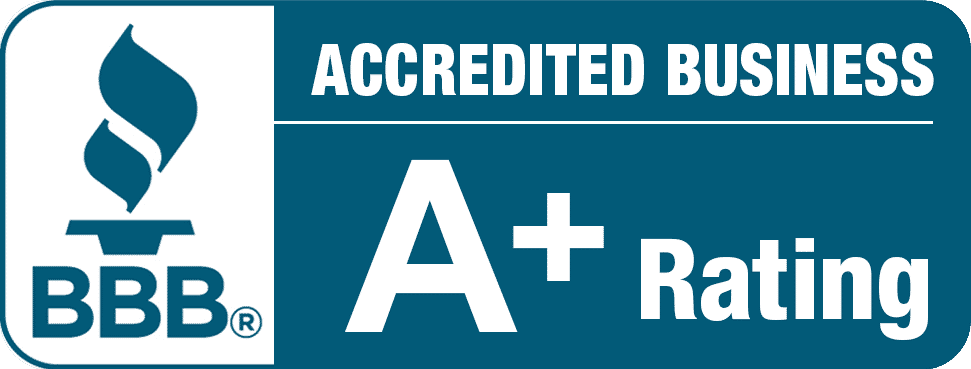High-efficiency furnaces transformed the HVAC industry when first introduced. An updated design allows them to produce more heat without using additional fuel, providing various benefits to both homeowners and the environment. The amount of money they’ll save you alone will motivate you to go check your furnace right now and see if you need an upgrade.
Likely, you’re asking yourself, “how do I know if my furnace is high efficiency?” While some furnaces are clearly labeled, others may require some investigative work. Fortunately, by pinpointing several specific characteristics, you can determine whether or not your furnace has high efficiency in no time.
Need some assistance? Rock Valley HVAC’s furnace repair in Janesville can help you figure out if you currently use a high-efficiency furnace or provide you with a quote to upgrade your HVAC system. Call us to schedule your appointment at 608-247-4949, and we’ll get you started today.
What Is a High-Efficiency Furnace?
A high-efficiency furnace must have an annual fuel utilization efficiency (AFUE) rating of at least 90%. The higher the AFUE rating, the more efficient the furnace, with the best systems having a 98% rating. Percentages are determined by how much fuel the furnace needs to heat your home.
For example, if your furnace has an AFUE rating of 92%, it will require 92% of its fuel to heat your home. The remaining 8% escapes during the combustion process, resulting in waste and energy loss.
How Do I Know if My Furnace Is High Efficiency?
The easiest way to tell if you have a high-efficiency furnace is by looking for a sticker or label on the system. These can be difficult to find or might be too worn to read. If that’s the case for you, you can look for other tell-tale signs, including:
Vents
Check your vents. Are they exiting the house through a metal pipe or chimney flue? If so, you have a standard or low-efficiency furnace. Vents for high-efficiency furnaces will always use a PVC pipe.
Age
Was your furnace installed more than 15 years ago? Then you likely have a standard furnace as high-efficiency furnaces weren’t on the market then.
Energy Bill
Is your energy bill consistent from year to year? Then you may have a high-efficiency furnace as they last longer and keep energy costs down. An increase in your monthly bill may be a sign that your high-efficiency furnace needs repairs.
Noise Level
Is your furnace noisy? Then you probably have a standard furnace, as high-efficiency systems operate more quietly when heating air.
Effectiveness
Do you notice cold spots in your home? If this is your experience, then you likely don’t have a high-efficiency furnace as they more evenly heat air in the home. Low-efficiency models tend to disperse the air unevenly, creating noticeable hot or cold spots.
If all else fails, Google your furnace’s brand and model number. You should be able to find its specifications which will include its AFUE rating. If your furnace has a rating of 89% or lower, then you know it’s a standard furnace you may want to consider upgrading.
Benefits of High-Efficiency Furnaces
Thinking about upgrading to a high-efficiency furnace? The various benefits they offer make this decision an easy one.
Eco-Friendly
Since high-efficiency furnaces use the same amount of fuel as standard systems but produce more heat, they make the eco-friendlier option. The higher the AFUE rating, the more energy-efficient the furnace.
Cheaper Energy Bills
Using a high-efficiency furnace will significantly reduce your monthly energy bills and help you save money on your utilities.
Longer Lifespan
On average, well-maintained high-efficiency furnaces have a longer lifespan than standard units.
Less Noise
Standard HVAC systems tend to make a racket when turned on and off. They also produce a constant whirring sound while running. High-efficiency furnaces are much quieter, which most homeowners prefer.
Sealed-Off Combustion Units
High-efficiency furnaces use sealed-off combustion units, meaning the system only uses outside air during the combustion process. For this reason, it won’t impact your home’s humidity since there’s no risk of back drafting.
Improved Indoor Air Quality
High-efficiency furnaces have improved filtration systems that more efficiently catch dust, dirt, and other allergens before they affect your home’s air quality.
Qualifies for Tax Rebates
Installing a high-efficiency furnace may qualify you for a tax rebate. However, before you buy anything, check the minimum AFUE rating needed to qualify in your area. Some states also require an Energy Star label to receive a rebate, while a gas furnace must meet standards regarding natural gas-to-heat consumption.
Smart Tech Compatible
Most high-efficiency furnaces these days are compatible with smart thermostats. These models prove much easier to use than standard thermostats and can be programmed to conserve energy. Additionally, since most smart thermostats are certified by Energy Star, they qualify for additional rebates.
Disadvantages of High-Efficiency Furnaces
While high-efficiency furnaces certainly offer more advantages than disadvantages, you should consider the following factors:
Larger Cost Upfront
High-efficiency furnaces will cost you more upfront, but they will save you money in the long run. Since they use less energy, they save homeowners money on their electric bills and have a longer expected lifespan than standard systems.
First-Time Installation Costs
You can expect various costs when installing your first high-efficiency furnace in your home since they use different equipment than standard systems. You will need a new ventilation system, plastic vent pipes (PVP) in place of metal pipes, and added vents and drains for the unit to be properly installed.
Fortunately, most states offer rebates to homeowners who choose to install high-efficiency furnaces to help offset these costs.
High-Efficiency Furnace Costs
So, you’ve answered the question, “How do I know if my furnace is high efficiency?” and didn’t find the answer you were hoping for. Now, you need to consider upgrading your HVAC system and wonder what a high-efficiency furnace costs. While the unit itself will cost more than a standard furnace, you need to take note of several factors.
A new standard system with installation will cost between $2,000 and $5,200. A high-efficiency furnace will cost between $3,300 and $6,900 once installed. The price difference depends on the brand you choose, AFUE rating, and the square footage of your home.
Comparing the prices to run a unit will vary depending on whether it uses natural gas, electric, propane, or oil. Regardless of what fuels your HVAC unit, a high-efficiency furnace will save you up to $200 each year to run.
Other potential costs associated with having a new furnace installed include:
- New duct system
- Duct repairs
- System conversion
- Permits
- Annual maintenance
- Repairs
- Removing old systems
- Added features
Contact Us About High-Efficiency Furnaces
Still wondering, “How do I know if my furnace is high efficiency?” Contact our furnace maintenance professionals at Rock Valley Services now for assistance. Our team can help you determine what kind of furnace you have and advise you on the best way to move forward.
If it turns out you have a high-efficiency furnace, but it doesn’t seem to be working at full capacity, it’s likely in need of maintenance or repairs. Those who learn they have a standard system may want to consider upgrading to a more energy-efficient HVAC system. Either way, Rocky Valley Services has your back!
Call us now at 608-247-4949 to schedule an appointment with one of our certified technicians to get a quote on maintenance, repairs, or installing a new high-efficiency unit. Our upfront pricing methods ensure all our customers are left satisfied. It’s our guarantee.



